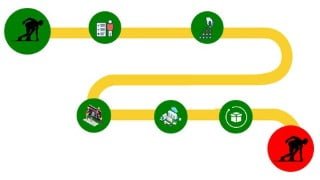TestNG made easy for beginners (Detailed course)
Master TestNG for building robust Automation Frameworks. Learn all concepts, topics, and practical examples in this comprehensive course.
What you’ll learn
- All the different topics of TestNG are covered in this course
- All the Topics of TestNG are covered in a practical manner with examples
- TestNG knowledge required for building TestNG Hybrid Automation Frameworks
- TestNG is covered in a detailed, in-depth, easy and practical manner
This course covers TestNG in-depth by covering all its concepts and topics, along with practical demonstration.
TestNG is explained from scratch and in a step by step manner.
TestNG is the backbone for building Selenium Test Automation Frameworks, hence it is required to learn in depth and detail.
This course ends your search for finding a course, which covers in and out about TestNG.
The following are the different TestNG topics which are covered in this course:
What is TestNG
Installing TestNG and using in Projects
Auto-generating TestNG Classes with a Test Method in Eclipse IDE
Using TestNG Testing Framework for Selenium Automation
Using TestNG Testing Framework with Rest Assured Framework for Automating API Tests
Using priority attribute
Using testng xml file for batch execution
Assertions in TestNG
Hard Assertions versus Soft Assertions
TestNG Annotations
Parameters in TestNG
Optional Parameters in TestNG
Enable Disable Test Cases using enabled attribute in testng xml file
Enable Disable Test Methods using enabled attribute and @Ignore annotation
Enable Disable Test Methods at Classs level using @Ignore annotation
Enable Disable Test Methods at Package level using @Ignore annotation
Grouping Tests in TestNG using multiple testng xml files
Grouping Tests in TestNG using groups attribute
Meta Groups in TestNG
Partial Groups in TestNG
Sub Category Groups in TestNG and using regular expressions
Test Dependency in TestNG using dependsOnMethods attribute
alwaysRun attribute
ignoreMissingDependencies attribute
dependsOnGroups attribute
Groups Depending on Groups using dependencies tag and depends-on attribute
Executing Tests at Package Level
TestNG Parameterization – Data Driven Testing, DataProvider annotation and dataProvider attribute
Naming DataProvider method using name attribute
Parameterizing Test method with Array parameter
Separating DataProvider method into a separate Class using dataProviderClass attribute
Multiple DataProvider methods
Multiple DataProvider methods in multiple classes
Why we have to use Object array to return data
Different return types of DataProvider
Jagged Arrays and DataProviders
Partially passing the data from Data Provider method using indices attribute
Reading Data from Excel files using POI API
Reading Data from Excel files into DataProvider method using POI API
Executing tests in parallel by specifying parallel attribute in DataProvider method
Controlling parallel tests thread count invoked by DataProvider using data-provider-thread-count
timeOut attribute
expectedExceptions attribute
Parallel Execution of Tests in TestNG using parallel and thread-count attributes
parallel=tests in TestNG Parallel execution
parallel=tests can only be mentioned at suite tag level and not at test tag level
parallel=classes in TestNG Parallel Execution
parallel=methods in TestNG Parallel Execution
Multiple test tags, but only few test tags enabled for parallel execution
parallel=none in TestNG Parallel Execution
parallel=false in TestNG Parallel Execution
parallel=tests but thread-count=1
Can we provide thread-count as negative value for Parallel Execution
More threads and less number of tests
parallel=classes or parallel=methods specified at suite tag level
Default thread-count when parallel attribute is only mentioned
invocationCount attribute
invocationTimeOut attribut
threadPoolSize attribute
What are Listeners
List of different Listeners available in TestNG Library
Using ITestListner Listener
Implementing Listeners at Class Level @Listeners annotation
Implementing Listeners at Suite Level in testng xml fil
onStart() and onFinish() ITestListener methods
Difference between listeners and annotations
Using TestListnerAdapter class in place of ITestListener interface
Taking screenshots for Failed Tests using Listeners
Avoiding Screenshot Overriding
Retrieving Test Tag name along with Test Name
Taking screenshots for Failed Tests using Dependency Injection
Default TestNG Reports and their real time usage
Uninstalling TestNG from Eclipse ID
TestNG verbose attribute – testng xml file TestNG Retry using IRetryAnalyzer and IAnnotationTransformer
TestNG verbose attribute – testng xml file
Who this course is for:
- This course is for those who want to gain complete knowledge on TestNG for building Automation Frameworks
User Reviews
Be the first to review “TestNG made easy for beginners (Detailed course)”
You must be logged in to post a review.







There are no reviews yet.